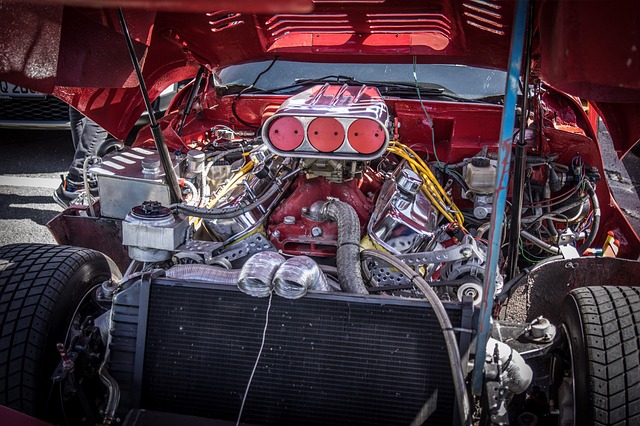Automobile engines serve as the core driving force for vehicle propulsion, converting chemical energy from fuel into mechanical energy. The engine's combustion chamber ignites an air-fuel mixture, propelling pistons within cylinders, and this process is facilitated by key subsystems like the intake manifold, cylinder head with its valves, pistons, crankshaft, and a robust engine block designed for durability and precision. A lubrication system ensures low friction and temperature control, while a cooling system maintains optimal engine temperature. The fuel system delivers precise fuel amounts, and the exhaust system expels waste gases efficiently.
The evolution of automobile engines reflects an environmental commitment, with advancements in technology addressing sustainability concerns. Traditional petrol engines are known for their power and efficiency, diesel engines for their torque and fuel economy, and hybrid engines for combining petrol and electric technologies. Electric vehicles (EVs) are at the forefront, offering silent operation and zero tailpipe emissions, propelled by renewable electricity and advancing battery technology.
The Four-Stroke Cycle is integral to engine performance, encompassing intake, compression, power, and exhaust phases for efficient operation. Modern engine blocks use materials like aluminum alloys for better performance and fuel efficiency, supported by design methodologies like finite element analysis (FEA) to ensure robustness and reliability. These innovations aim to meet diverse needs, enhance efficiency, and contribute to the reduction of emissions in the automotive industry.
Discover the intricate workings of automobile engines, from their fundamental components to cutting-edge advancements. This comprehensive guide delves into the various types of engines, including petrol, diesel, hybrid, and electric variants, offering a detailed exploration of their mechanisms and applications. Learn about the four-stroke cycle that powers combustion engines and the robust engine block and cylinder head designs that ensure durability and efficiency. Examine the pivotal role of pistons, connecting rods, and the crankshaft in converting energy into motion. Unravel the complexities of fuel systems and air-intake/exhaust mechanisms, understand the critical function of lubrication, and appreciate the significance of emission control systems in today’s environmentally conscious world. Navigate through common issues in engine maintenance, the impact of alternative fuels, safety considerations, and the transformative journey towards energy efficiency and sustainable practices. Anticipate future trends and technological innovations that will shape the automobile engine landscape. Whether you’re a curious enthusiast or a seasoned mechanic, this article provides an informative roadmap to understanding the heart of every vehicle: the automobile engine.
- Understanding the Components of Automobile Engines
- Types of Automobile Engines: Petrol, Diesel, Hybrid, and Electric Variants
- The Four-Stroke Cycle: Combustion Engine Operation Explained
- Engine Block: Design and Materials for Strength and Durability
Understanding the Components of Automobile Engines

Automobile engines are complex machines at the heart of vehicle propulsion, comprising a series of interconnected components that work in unison to convert chemical energy into mechanical energy. The core of an automobile engine is its combustion chamber, where the air-fuel mixture ignites and powers the pistons. This process is facilitated by the engine’s major subsystems: the intake manifold draws in a mixture of air and fuel; the cylinder head houses the combustion chambers and valves that regulate the intake and exhaust strokes; the pistons convert the pressure from the combustion into rotational motion; and the crankshaft transforms this rotation into the linear motion necessary to propel the vehicle.
The engine block, which encloses these components, is a critical structural element designed for both durability and precise tolerances. Within it, the engine’s lubrication system ensures all parts move smoothly, minimizing friction and preventing overheating. The cooling system, which includes radiators and fans, maintains optimal operating temperatures. Additionally, the fuel system delivers a precise amount of fuel to the combustion chamber, while the exhaust system manages the removal of waste gases from the engine. Each component’s role is vital to the engine’s overall efficiency and longevity, making understanding automobile engines essential for anyone interested in their functioning or maintenance.
Types of Automobile Engines: Petrol, Diesel, Hybrid, and Electric Variants

Automobile engines are a cornerstone of vehicle propulsion, with a variety of types catering to diverse needs and environmental considerations. Among the most prevalent are petrol engines, which rely on the internal combustion of gasoline to generate power. These engines are known for their responsive performance and have been the mainstay of personal vehicles due to their ability to deliver a balance between efficiency and power. However, with growing environmental concerns, diesel engines have gained prominence as well, offering superior torque and fuel efficiency, making them particularly suited for heavy-duty and commercial transport applications.
The evolution of automobile engineering has led to the development of hybrid engines, which combine elements of both petrol and electric powertrains. These systems leverage the strengths of each to maximize energy efficiency, significantly reducing emissions while providing the versatility of a conventional engine. Furthermore, electric variants of automobile engines represent the forefront of this evolution. They operate without combustion, replacing fossil fuels with renewable electricity. Electric vehicles (EVs) offer silent operation and zero tailpipe emissions, making them an environmentally friendly option. As battery technology advances and infrastructure improves, electric engines are poised to become increasingly mainstream, shaping the future of automobile propulsion and contributing to a cleaner, more sustainable transportation landscape.
The Four-Stroke Cycle: Combustion Engine Operation Explained

Automobile engines operate through a fundamental process known as the Four-Stroke Cycle, which is pivotal to their functionality and efficiency. This cycle consists of four distinct phases: intake, compression, power, and exhaust. During the intake stroke, the engine draws in a mixture of air and fuel into the combustion chamber. This mixture fills the space necessary for combustion, which occurs during the compression stroke. Here, the piston compresses the air-fuel mix, increasing its pressure and temperature, setting the stage for ignition.
The power stroke follows, where the compressed fuel-air mixture is ignited by the spark plug, causing a rapid expansion of gases. This expansion drives the piston downward, turning the crankshaft and generating mechanical energy that propels the vehicle forward. The final stroke is the exhaust stroke, where the burnt gases are expelled from the engine. A fresh intake of air and fuel then begins the cycle anew, ensuring continuous operation of the automobile engine. This cyclical process, central to the combustion engine’s operation, is a testament to the ingenuity behind automobile engines, enabling them to deliver consistent and reliable power for transportation needs.
Engine Block: Design and Materials for Strength and Durability

Automobile engines are the cornerstone of vehicle propulsion, with the engine block serving as the foundation of their design. The engine block’s primary function is to house the engine’s components securely and provide a stable structure for optimal performance. It is crafted using precision engineering to ensure it can endure the immense stress and vibrations generated during operation. The design of the engine block is intricate, featuring passages and chambers that channel coolant and lubricating oil to maintain temperature regulation and protect moving parts.
Material selection for the engine block is critical in achieving both strength and durability. Traditionally, grey cast iron was the material of choice due to its excellent heat dissipation properties and ability to withstand mechanical stress. However, advancements in automobile engine technology have led to the use of lighter and stronger materials such as aluminum alloys. These materials offer significant weight reduction, which contributes to improved fuel efficiency and vehicle performance. Additionally, modern engine blocks are often designed using finite element analysis (FEA) to optimize their structure, ensuring they can withstand the pressures of modern driving demands without compromising on longevity or reliability. This analytical approach in design also enables manufacturers to tailor the engine block for specific applications, whether it be for high-performance vehicles or those designed for fuel efficiency and reduced emissions.
Automobile engines represent a marvel of engineering, powering our vehicles with a blend of precision, efficiency, and innovation. This article has shed light on the intricate components that make up these engines, their diverse types ranging from traditional petrol and diesel to forward-thinking hybrid and electric variants. We’ve explored the fundamental four-stroke cycle that underpins combustion engine operation and delved into the robust design and materials of the engine block. Understanding automobile engines is key to appreciating the breadth of technology in the transportation sector and recognizing their role in shaping its future. As we continue to advance, our relationship with these mechanical marvels will undoubtedly evolve, but their significance in the world of automobiles remains paramount.
